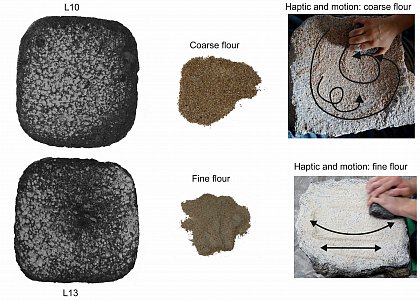Neolithic foodways and the spread of meals made of pulses and cereals in the Aegean and Southeastern Europe.
PI PD Dr. Laura Dietrich
The project intents to reconstruct Neolithic foodways, meaning both sources of plant food and meals prepared from crops and wild plants starting from the archaeological finds, thus from the objects used to prepare meals by using use-wear and residue analysis on original and experimentally used replicas. Main case studies are the grinding and pounding stones from Çukuriçi Höyük, Anatolia, Svinjarička Čuka, Serbia and Sultana Malu-Roşu, Romania.
All humans share the basic need to eat and drink, driven by their biological instinct to stay alive. This universality of humankind, in which we all strive to supply our bodies with nutrients through food intake, is a good starting point to pursue structural social and behavioral studies of past societies. Archaeological approaches to nutrition have the potential not only to clarify questions of subsistence – the maintenance of life – but are also able to draw on the conceptual and symbolic significance of food to human social lives. The approach from the perspective of the archaeology of food is a highly modern topic within archaeology generally and for the Neolithic in particular, a timeframe which is associated with the early and accelerating massive exploitation and change of the natural environment by humans. The concept of how we “do food”, including its storage, preparation and consumption, provides also theoretical frameworks for archaeological considerations upon past societies. Foodways are able to indicate both a shared identity of archaeological groups or their separation. Furthermore, archaeologically visible changes in foodways represent a sensitive marker for environmental and social changes within past populations. While food sources like animals are generally well detectable through the preservation of bones, the same is not true for plants which, as a rule, remain invisible when they are not accidentally burnt. In this regard, the rich inventory of grinding stones as main kitchen tools at both sites will provide a solid basis for the study of Early Neolithic foodways. Methods of investigation are functional studies by traceology, including residue analysis of phytoliths and starch, and reconstruction of the operation and use of these tools.

Experimental production of fine and coarse flour and specific use-wear (photo by Laura Dietrich, © Laura Dietrich)



